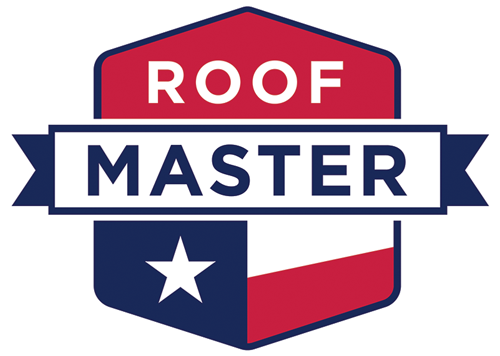Are you planning to apply roofing tar around your chimney? If so, you have come to the right place. Nothing matches the feeling of a warm fire during cold seasons. However, while conserving your chimney, you are likely to face challenges such as chimney leaks.
Chimney leakages are common due to various contributing factors. So, it is essential to attend to a leaking chimney to avoid severe damages. This guide explores the causes of chimney leakages and how you can apply tar around the chimneys to prevent leaks.
Causes of a Leaking Chimney
Some of the most common causes of leakages in the chimney include:
- Damaged Flashing
Flashing is a sheet of metal fixed around the mound of your chimney. Flashing seals joints to prevent water from leaking. Over time, the flashing becomes a fault. If you have safe access to the roof chimney, you can assess the nature and extent of the damage.
The signs that your flashing is at fault include:
- Build-up of salts
- Broken elements from the chimney
- Evidence of leaking water in areas around the chimney
- Cracked Chimney Crown
A cracked chimney crown leads to leakages. You can fix the chimney crown at the top of the chimney and above the stonework. The work of a chimney crown is to prevent rainfall from entering the chimney. A cracked chimney crown can’t stop leakages.
- Damaged Brick and Mortar
Another reason for a leaking chimney is the stack mortar and brick damage, known as spalling bricks. It occurs when moisture finds its way into the bricks and goes through the freeze and thaw cycles.
The damage will cause spalling, where bricks begin to flake, crumble, and pop completely from the chimney. Consequently, water will start leaking into the house.
- Lack of Roof Tiles
The absence of roof tiles around the chimney can result in leakages. Apart from that, water can still find its way from a different weak point of your roof to the chimney. So always check for damaged or worn tiles and areas of the rooftop that are missing a tile.
How to Know When Your Chimney Is Leaking
Several signs indicate a leaking chimney. Here we list some of the most common signs. These include:
Moisture
Poor chimney ventilation and weak or broken flashing lead to moisture accretion inside the chimney. When it rains heavily, water will also find its way into the chimney. Another cause of moisture is salt contamination on the chimney’s wall plaster.
Condensation
Condensation around the fireplace usually results from a leaking chimney. Place your hand on the condensed area and back to a drier part to note the level of condensation in your place. You can also use a damp meter for exact condensation measurements.
Leaks Staining Wall
When your chimney is leaking, you are likely to notice various signs of stains. Water can leave its mark by staining the walls of your chimney. This comes from problems with your guttering or chimney stack mortar, among other issues.
How to Tar Around a Chimney to Stop Leakages
A tar patch is among the best ways to stop damages from a water leak around your chimney. This may not be the ideal way to repair the faults. However, it is a reasonable stop-gap measure if you lack an instant option and are waiting to make a permanent fix.
Start by Fixing the Flashing
Gaps, holes, and rusted flashing are the number one cause of leaks around chimneys. Before you place a tar patch, identify the issue with the flashing, and repair it promptly.
Pin down any loose edge or add a silicone seal to the gaps. Make the flashing as sealed as possible. While tacking the flashing and filling it with tar provides a temporary solution, replacing it can solve the problem completely.
Suitable Preparation
Clean and dry the area around the chimney for the tar to form a sound seal. Start by brushing away all the debris, such as twigs and leaves, and wipe the area down with a wet rag. Permit it to dry. If the site is wet, mop it using water until it’s sparkling clean.
Spread Out the Roofing Tar
Use a plastic trowel to spread a thin layer of tar around the base of the chimney. Use the tar to cover around the edges of the flashing and the adjacent roofing. Add a second layer of tar and spread it out further, at least six inches beyond the edge of the flashing.
Saturate the tar entirely by pressing cotton cloth strips into the tar. Add another thin layer of tar with a trowel and spread it past the cloth’s edges.
Advantages of Roofing Tar
Roofing tar is an ideal choice for a flat roof. This kind of material is resilient to the ultraviolet rays from the sun. Roofing tar also protects your roof from wind, snow, and water that collects on a flat roof. Roofing tar is also quick, easy, and pocket-friendly.
Disadvantages of Roofing Tar
When applying it and during the curing process, roofing tar emits toxic fumes. Installers need to wear a face mask when using roofing tar at your chimney’s base. Contactors may also want to consider installing the roofing tar when you are away from your house.
Also, remember that roofing tar is a short-term solution. Putting tar around your chimney’s base stops the leakage temporarily. The tar is likely to dry up and crack, letting the water leak into the house. But it is more important to have a tar seal or patch rather than allowing a leak to continue.
Final Words
Connecting a chimney cap helps in sinking the risk of leakages, particularly during or following dense rains. The rain cap acts as an umbrella designed to stop drizzles from making their way into your chimney. If your chimney leakage persists or you are unsure of how to apply roofing tar around the chimney, consult a professional roofer to help you.
Contact us to speak with one of the professional roofers at Roof Master.


